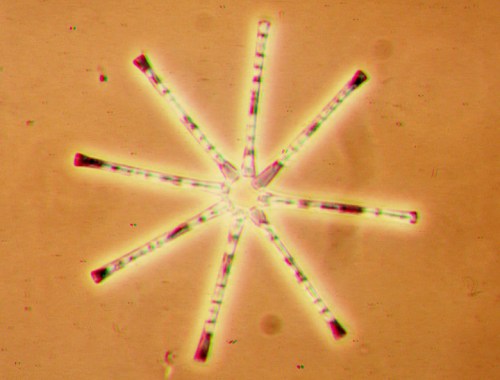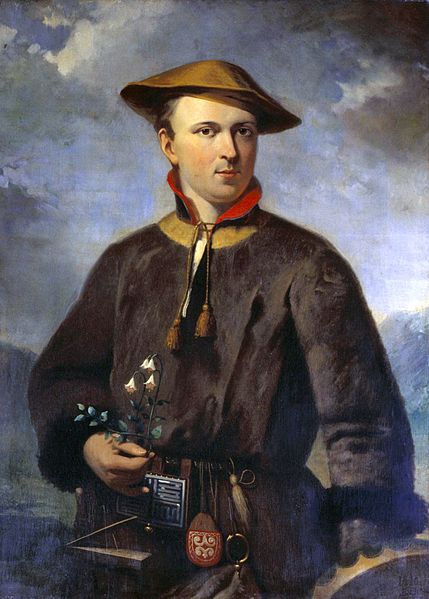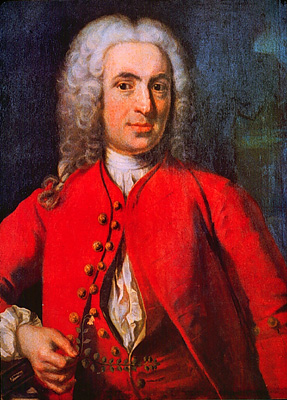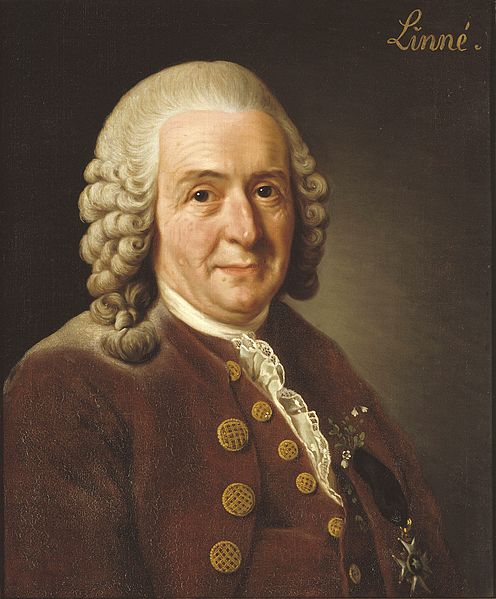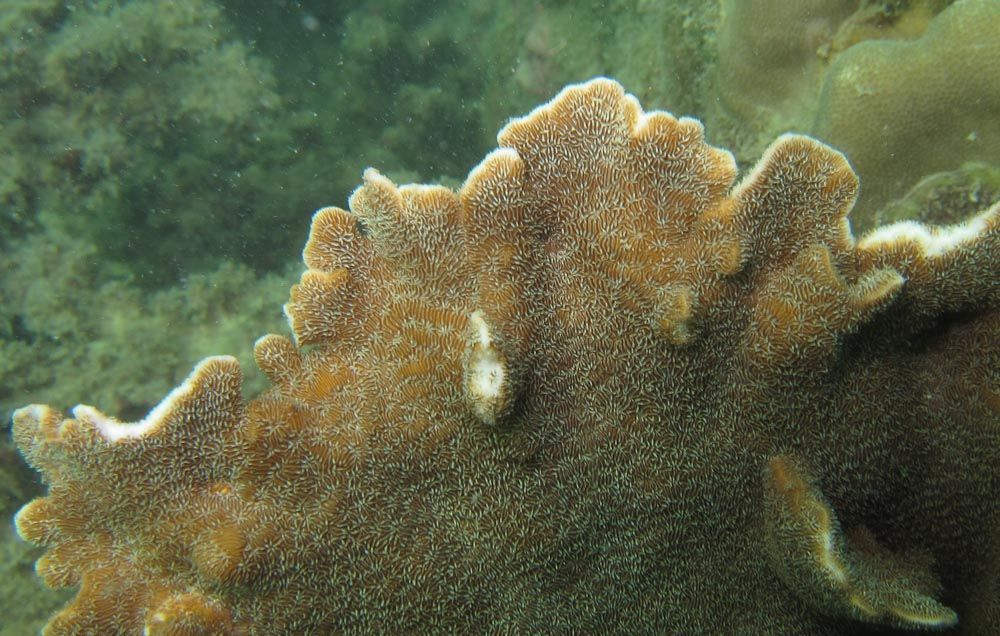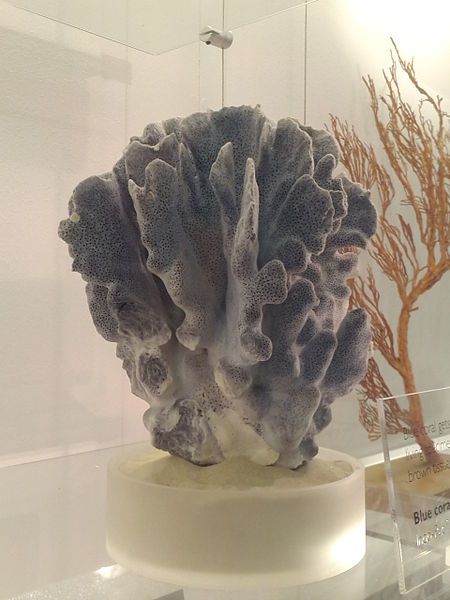by Piter Kehoma Boll
Today we celebrate the birthday of the US biochemist and Nobel laureate Julius Axelrod.
Born on 30 May 1912 in New York City, Julius Axelrod was the son of poor Jewish immigrants from Poland, Molly (née Leichtling) and Isadore Axelrod, a basket maker.
After graduating from Seward Park High School, Axelrod studied at the New York University, but after one year his family was not able to afford his studies anymore and he was transferred to the tuition-free College of the City of New York. He graduated in 1933 with a bachelor in Biology. In the same year, he had a laboratory accident when an ammonia bottle exploded, making him lose the sight of his left eye.
Deferred from the World War II draft, Axelrod pursued his dream to become a doctor, applying to numerous medical schools, but was rejected by all of them. He was then hired as a laboratory technician at the Harriman Research Institute at the New York University, preparing buffer solutions and assisting with research on enzymes in malignant tumors. In 1935, the laboratory ran out of fundings and Axelrod lost his position, starting a new work in the Laboratory of Industrial Hygiene at the New York City Department of Health. There, he was assigned the task of monitoring the vitamin content of foods, developing sensitive and specific methods for measuring drugs.
While working there, Axelrod met and married Sally Taub, who had a degree in chemistry from Hunter College, and would eventually have two sons with her.
One day, Axelrod’s department was assigned to clarify why phenacetin and acetanilide, two main ingredients in headache remedies, increased methaemoglobin, a product of haemoglobin’s metabolism, to dangerously high levels in the patients’ blood. In 1946, Axelrod sought assistance of Bernard Brodie, working at the Goldwater Memorial Hospital, to solve this problem. Together they found out that the products of the metabolism of acetanilid and phenacetin, aniline and p-phenetidin, respectively, are the responsible for the elevation of the methaemoglobin’s levels. They also discovered another metabolite of the process, called N-acetyl-p-aminophenol, which is the responsible for the analgesic effects. Today this metabolite is more commonly known as paracetamol, being the world’s most widely used analgesic.
In 1949, Axelrod began to work at the National Heart Institute of the National Institutes of Health. There, he developed research on the metabolism of caffeine, ephedrine and amphetamine in animals, developing an interest on the sympathetic nervous system and its neurotransmitters epinephrine and norepinephrine. He also conducted some of the first experiments on LSD.
In order to advance his career, especially due to the pressure of friends, Axelrod realized that he needed a PhD degree. Thus, he took a year’s leave of absence in 1954, aged 42, to attend George Washington University Medical School. Allowed to submit some of his previous research toward his degree, he was able to receive his PhD one year later, in 1955.
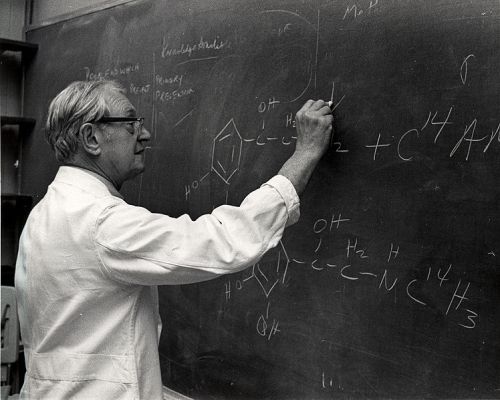
Julius Axelrod in 1973.
In his continuing studies on neurotransmitters, Axelrod discovered that epinephrine and norepinephrine, after released into the synapse, are not inactivated by enzymes, but are rather recaptured by the nerve ending that released them, therefore being recycled. This discovery of the release and reuptake of neurotransmitters made him won the Nobel Prize in Physiology or Medicine in 1970 along with Bernard Katz (1911–2003) and Ulf von Euler (1905–1983). This research later led to the development of selective serotonin reuptake inhibitors, such as fluoxetine (Prozac), a common antidepressant.
Later, Axelrod focused his research on the study of the pineal gland. He and his colleagues showed that the hormone melatonin is generated from tryptophan, which is also the precursor of the neurotransmitter serotonin. They also discovered that the synthesis of melatonin is controled by the circadian rhythm, which is driven by the hypothalamus, and that the hormone has many effects throughout the nervous system, so that the pineal gland works as a biological clock.
Axelrod retired in 1984, but continued to work until he died of a heart attack on 29 December 2004, aged 92.
– – –
– – –
References:
Craver CF (2008) Axelrod, Julius. Complete Dictionary of Scientific Biography 18: 122.
Snyder SH (2005) Obituary: Julius Axelrod (1912–2004). Nature 433: 593.
Wikipedia. Julius Axelrod. Available at < https://en.wikipedia.org/wiki/Julius_Axelrod >. Access on 29 May 2018.



